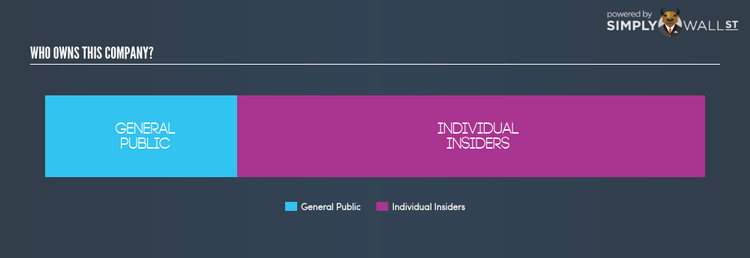Who Are The Major Shareholders Of Sapling Spólka Akcyjna (WSE:SAP)?

In this article, I’m going to take a look at Sapling Spólka Akcyjna’s (WSE:SAP) latest ownership structure, a non-fundamental factor which is important, but remains a less discussed subject among investors. The impact of a company’s ownership structure affects both its short- and long-term performance. Differences in ownership structure of companies can have a profound effect on how management’s incentives are aligned with shareholder returns, which is why we’ll take a moment to analyse SAP’s shareholder registry.
Check out our latest analysis for Sapling Spólka Akcyjna
Insider Ownership
Insiders form another group of important ownership types as they manage the company’s operations and decide the best use of capital. Insider ownership has been linked to better alignment between management and shareholders. SAP insiders hold a significant stake of 70.84% in the company. This level of insider ownership has been found to have a negative impact on companies with consistently low PE ratios (underperformers), while it has been positive in the case of high PE ratio firms (outperformers). It may be interesting to take a look at what company insiders have been doing with their holdings lately. Insiders buying company shares can be a positive indicator of future performance, but a selling decision can simply be driven by personal financial needs.
General Public Ownership
The general public holds a substantial 29.16% stake in SAP, making it a highly popular stock among retail investors. With this size of ownership, retail investors can collectively play a role in major company policies that affect shareholders returns, including executive remuneration and the appointment of directors. They can also exercise the power to decline an acquisition or merger that may not improve profitability.
Next Steps:
A relatively significant holding of company insiders could mean high alignment with shareholders. But at the same time, investors should be aware of the level of influence executives could have on governance decisions. However, if you are building an investment case for SAP, ownership structure alone should not dictate your decision to buy or sell the stock. Rather, you should be looking at fundamental drivers such as Sapling Spólka Akcyjna’s past track record and financial health. I highly recommend you to complete your research by taking a look at the following:
Financial Health: Is SAP’s operations financially sustainable? Balance sheets can be hard to analyze, which is why we’ve done it for you. Check out our financial health checks here.
Past Track Record: Has SAP been consistently performing well irrespective of the ups and downs in the market? Go into more detail in the past performance analysis and take a look at the free visual representations of SAP’s historicals for more clarity.
Other High-Performing Stocks: Are there other stocks that provide better prospects with proven track records? Explore our free list of these great stocks here.
NB: Figures in this article are calculated using data from the last twelve months, which refer to the 12-month period ending on the last date of the month the financial statement is dated. This may not be consistent with full year annual report figures.
To help readers see pass the short term volatility of the financial market, we aim to bring you a long-term focused research analysis purely driven by fundamental data. Note that our analysis does not factor in the latest price sensitive company announcements.
The author is an independent contributor and at the time of publication had no position in the stocks mentioned.

